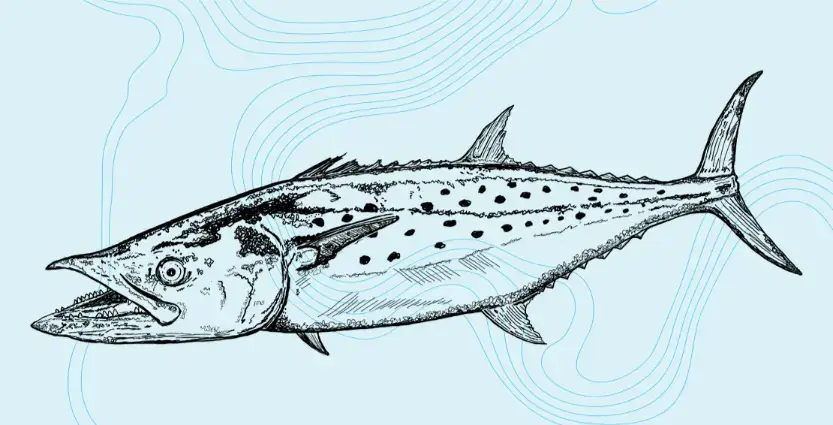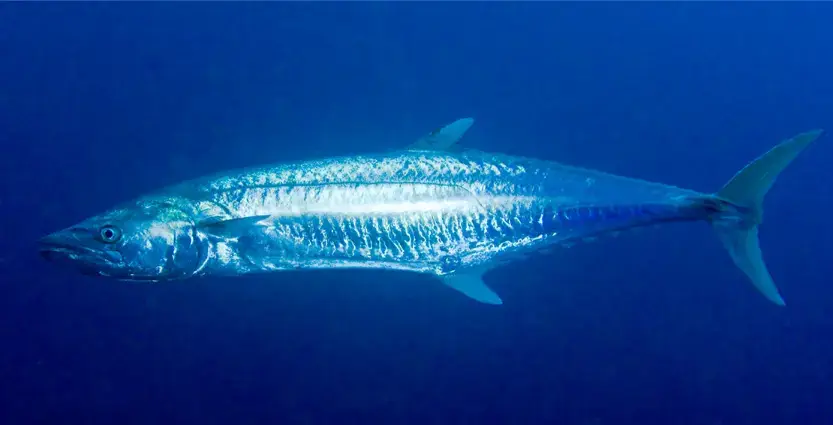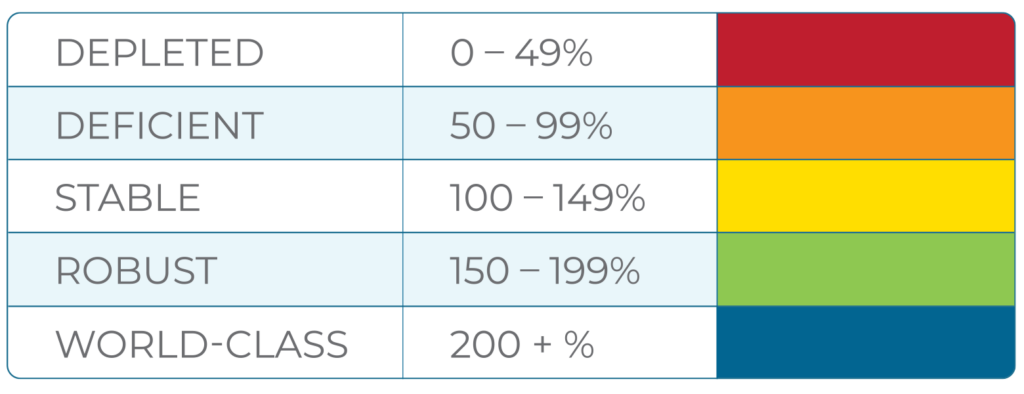Spanish Mackerel Stock Statusin North Carolina



Status Overview
Spanish Mackerel are fast, schooling predators that migrate along North Carolina’s coast, prized by anglers for their speed, sharp teeth, and striking, iridescent spots. For Spanish Mackerel, the FINDEX gap assessment compared Target and Terminal values of Fishing Mortality (FMSY) and Spawning Stock Biomass (SSBMSY) from the stock assessment developed by the South Atlantic Fishery Management Council, under the oversight of the National Marine Fisheries Service. The Terminal year (the most recent data year) in the stock assessment model was 2020..
How It’s Calculated
FINDEX is a novel way to gauge whether the status of a fish population is trending up or down. Management of most fish species in North Carolina is guided by stock assessment models developed by various groups of scientists. The calculations in our FINDEX metric measure the gap between the desired condition of a fish stock (the Target reference value) and the existing condition (the most recent data year in the model called the Terminal value) as determined in each stock assessment. The gaps between Target and Terminal values are reported as ratios

(0.79 x 1.05) x 100 = 82.95%
FINDEX = 82.95% for 2020

What Does Deficient Mean?
FINDEX designation as “Deficient” is assigned to any stock with a value between 50 and 99%. The most recent peer-reviewed stock assessment model for Spanish Mackerel (2020 data) tells a mixed story. Spawning Stock Biomass (the estimated metric tons of females in the population) performed well relative to the Target reference value, indicating the population was not “overfished.” On the other hand, the Fishing Mortality estimate for 2020 (0.653) was too high relative to the Target reference value suggesting “overfishing” was occurring in the terminal year of the assessment.
Oddly, the 2020 Fishing Mortality estimate in the model was the highest in the Spanish Mackerel time series, twice as high as most years observed in the data set. The modelers chose to address this anomaly by taking the average of the 2018-2020 Fishing Mortality estimates (which dropped the value to 0.40) and then asserting that the stock was not experiencing “overfishing.”
Formal stock status conclusions by the modelers that suggest the stock is not “overfished,” while at the same time indicating that “overfishing” is occurring if the Terminal year value is used, but “overfishing” is not occurring when a three-year average is used, makes for a confusing interpretation. Our FINDEX metric remedies this confusion by classifying Spanish Mackerel stock status as “Deficient.”
Status Over Time
The stock assessment model for Spanish Mackerel provides point estimates of Fishing Mortality and Spawning Stock Biomass for each year covered in the data set. We’ve compared the Target reference values to these annual point estimates and calculated the ratios (gaps) for each data year through the period 1986–2020. Applying the FINDEX gap assessment to the entire time series provides the following stock status trendline:
How Do We Get To World-Class?
Spanish Mackerel Target values for Fishing Mortality (0.516) and Spawning Stock Biomass (6,406 metric tons) have been established by the management agencies. Although the 2020 FINDEX value classifies the stock as “Deficient”, the Spanish Mackerel population was either “Robust” or “World-Class” for greater than 50% of the years in the time series, including the years 2015-2019. If Fishing Mortality dropped to 0.27 at the current estimate of Spawning Stock Biomass, then the FINDEX value would exceed 200% on our barometer.
Commercial Trends
The graph below illustrates commercial harvest trends for Spanish Mackerel from 1985 through 2022. In 2022, 416 commercial fishers recorded 4,758 trips harvesting 926,026 pounds of Spanish Mackerel valued at $1,584,303. Annual commercial values regularly exceeded $1 million with the highest commercial value in the time series recorded in 2021 at $1,846,682. Supporting data was sourced from the North Carolina Department of Environmental Quality.
Recreational Trends
The graph below illustrates recreational harvest trends for Spanish Mackerel from 1985 through 2022. In 2022, recreational anglers harvested an estimated 1,898,755 Spanish Mackerel weighing 1,841,527 pounds. Mean length in 2022 was 14 inches and mean weight was 1.0 pound per fish. The estimated number of Spanish Mackerel released recreationally in 2022 was 2,268,283 fish. An estimated 1,614,173 fishing trips were taken in pursuit of Spanish Mackerel in 2022. Supporting data was collected through the Marine Recreational Information Program as sourced from the North Carolina Department of Environmental Quality.
Spanish Mackerel
Did You Know?
- Recreational anglers harvested more Spanish Mackerel from North Carolina than any of the other 10 states on the Atlantic Seaboard (New York to Florida) that reported harvest of the species. South Carolina was second with an estimated harvest of 1,066,999 Spanish Mackerel in 2022.
- Spanish Mackerel migrate in ocean waters near the coast, living off the coast of Florida in the winter, moving toward North Carolina in early April, and then to New York in June.
- Females are mature at age 2, producing up to 1.5 million eggs.
- Juveniles grow quickly, reaching 12-15 inches in their first year of life.
- Spanish Mackerel can live up to 12 years and grow as large as 30 inches in fork length.
State Record
- North Carolina’s state record Spanish Mackerel was caught from Ocracoke Inlet in 1987 by Robert Cranton.
- The record-breaking fish weighed 13 pounds.
Harvest Seasons
for Spanish Mackerel
- The recreational limit for Spanish Mackerel is currently 15 fish per day, with a minimum size limit of 12 inches in fork length.
- Commercial fishing operations for Spanish Mackerel are managed by an annual catch limit (ACL), seasonal harvest periods and trip limits, and a 12-inch minimum size limit. Proclamations for Spanish Mackerel can be found here.
Stay Current
As our team diligently refines FINDEX, we’re committed to delivering the most recent stock status updates for North Carolina’s diverse finfish species. Subscribe below to receive a stream of inshore insights and stay current with our coastal initiatives.
